Review:
Going Infinite, by Michael Lewis
| Publisher: |
W.W. Norton & Company |
| Copyright: |
2023 |
| ISBN: |
1-324-07434-5 |
| Format: |
Kindle |
| Pages: |
255 |
My first reaction when I heard that Michael Lewis had been embedded with
Sam Bankman-Fried working on a book when Bankman-Fried's cryptocurrency
exchange FTX collapsed into bankruptcy after losing billions of dollars of
customer deposits was "holy shit, why would you talk to
Michael
Lewis about your dodgy cryptocurrency company?" Followed immediately by
"I have to read this book."
This is that book.
I wasn't sure how Lewis would approach this topic. His normal (although
not exclusive) area of interest is financial systems and crises, and there
is lots of room for multiple books about cryptocurrency fiascoes using
someone like Bankman-Fried as a pivot. But
Going Infinite is not
like
The Big Short or Lewis's other
financial industry books. It's a nearly straight biography of Sam
Bankman-Fried, with just enough context for the reader to follow his life.
To understand what you're getting in
Going Infinite, I think it's
important to understand what sort of book Lewis likes to write. Lewis is
not exactly a reporter, although he does explain complicated things for a
mass audience. He's primarily a storyteller who collects people he finds
fascinating. This book was therefore never going to be like, say,
Carreyrou's
Bad Blood or Isaac's
Super Pumped. Lewis's interest is not
in a forensic account of how FTX or Alameda Research were structured. His
interest is in what makes Sam Bankman-Fried tick, what's going on inside
his head.
That's not a question Lewis directly answers, though. Instead, he shows
you Bankman-Fried as Lewis saw him and was able to reconstruct from
interviews and sources and lets you draw your own conclusions. Boy did I
ever draw a lot of conclusions, most of which were highly unflattering.
However, one conclusion I didn't draw, and had been dubious about even
before reading this book, was that Sam Bankman-Fried was some sort of
criminal mastermind who intentionally plotted to steal customer money.
Lewis clearly doesn't believe this is the case, and with the caveat that
my study of the evidence outside of this book has been spotty and
intermittent, I think Lewis has the better of the argument.
I am utterly fascinated by this, and I'm afraid this review is going to
turn into a long summary of my take on the argument, so here's the capsule
review before you get bored and wander off: This is a highly entertaining
book written by an excellent storyteller. I am also inclined to believe
most of it is true, but given that I'm not on the jury, I'm not that
invested in whether Lewis is too credulous towards the explanations of the
people involved. What I do know is that it's a fantastic yarn with
characters who are too wild to put in fiction, and I thoroughly enjoyed
it.
There are a few things that everyone involved appears to agree on, and
therefore I think we can take as settled. One is that Bankman-Fried, and
most of the rest of FTX and Alameda Research, never clearly distinguished
between customer money and all of the other money. It's not obvious that
their home-grown accounting software (written entirely by one person! who
never spoke to other people! in code that no one else could understand!)
was even capable of clearly delineating between their piles of money.
Another is that FTX and Alameda Research were thoroughly intermingled.
There was no official reporting structure and possibly not even a coherent
list of employees. The environment was so chaotic that lots of people,
including Bankman-Fried, could have stolen millions of dollars without
anyone noticing. But it was also so chaotic that they could, and did,
literally misplace millions of dollars by accident, or because
Bankman-Fried had problems with object permanence.
Something that was previously less obvious from news coverage but that
comes through very clearly in this book is that Bankman-Fried seriously
struggled with normal interpersonal and societal interactions. We know
from multiple sources that he was diagnosed with ADHD and depression
(Lewis describes it specifically as anhedonia, the inability to feel
pleasure). The ADHD in Lewis's account is quite severe and does not sound
controlled, despite medication; for example, Bankman-Fried routinely
played timed video games while he was having important meetings, forgot
things the moment he stopped dealing with them, was constantly on his
phone or seeking out some other distraction, and often stimmed (by
bouncing his leg) to a degree that other people found it distracting.
Perhaps more tellingly, Bankman-Fried repeatedly describes himself in
diary entries and correspondence to other people (particularly Caroline
Ellison, his employee and on-and-off secret girlfriend) as being devoid of
empathy and unable to access his own emotions, which Lewis supports with
stories from former co-workers. I'm very hesitant to diagnose someone via
a book, but, at least in Lewis's account, Bankman-Fried nearly walks down
the symptom list of antisocial personality disorder in his own description
of himself to other people. (The one exception is around physical
violence; there is nothing in this book or in any of the other reporting
that I've seen to indicate that Bankman-Fried was violent or physically
abusive.) One of the recurrent themes of this book is that Bankman-Fried
never saw the point in following rules that didn't make sense to him or
worrying about things he thought weren't important, and therefore simply
didn't.
By about a third of the way into this book, before FTX is even properly
started, very little about its eventual downfall will seem that
surprising. There was no way that Sam Bankman-Fried was going to be able
to run a successful business over time. He was extremely good at
probabilistic trading and spotting exploitable market inefficiencies, and
extremely bad at essentially every other aspect of living in a society
with other people, other than a hit-or-miss ability to charm that worked
much better with large audiences than one-on-one. The real question was
why anyone would ever entrust this man with millions of dollars or decide
to work for him for longer than two weeks.
The answer to those questions changes over the course of this story.
Later on, it was timing. Sam Bankman-Fried took the techniques of high
frequency trading he learned at Jane Street Capital and applied them to
exploiting cryptocurrency markets at precisely the right time in the
cryptocurrency bubble. There was far more money than sense, the most
ruthless financial players were still too leery to get involved, and a
rising tide was lifting all boats, even the ones that were piles of
driftwood. When cryptocurrency inevitably collapsed, so did his
businesses. In retrospect, that seems inevitable.
The early answer, though, was effective altruism.
A full discussion of effective altruism is beyond the scope of this
review, although Lewis offers a decent introduction in the book. The
short version is that a sensible and defensible desire to use stronger
standards of evidence in evaluating charitable giving turned into a
bizarre navel-gazing exercise in making up statistical risks to
hypothetical future people and treating those made-up numbers as if they
should be the bedrock of one's personal ethics. One of the people most
responsible for this turn is an Oxford philosopher named
Will MacAskill.
Sam Bankman-Fried was already obsessed with utilitarianism, in part due to
his parents' philosophical beliefs, and it was a presentation by Will
MacAskill that converted him to the effective altruism variant of extreme
utilitarianism.
In Lewis's presentation, this was like joining a cult. The impression I
came away with feels like something out of a
science fiction novel: Bankman-Fried knew there was some serious gap in
his thought processes where most people had empathy, was deeply troubled
by this, and latched on to effective altruism as the ethical framework to
plug into that hole. So much of effective altruism sounds like a con game
that it's easy to think the participants are lying, but Lewis clearly
believes Bankman-Fried is a true believer. He appeared to be sincerely
trying to make money in order to use it to solve existential threats to
society, he does not appear to be motivated by money apart from that goal,
and he was following through (in bizarre and mostly ineffective ways).
I find this particularly believable because effective altruism as a belief
system seems designed to fit Bankman-Fried's personality and justify the
things he wanted to do anyway. Effective altruism says that empathy is
meaningless, emotion is meaningless, and ethical decisions should be made
solely on the basis of expected value: how much return (usually in safety)
does society get for your investment. Effective altruism says that all
the things that Sam Bankman-Fried was bad at were useless and unimportant,
so he could stop feeling bad about his apparent lack of normal human
morality. The only thing that mattered was the thing that he was
exceptionally good at: probabilistic reasoning under uncertainty. And,
critically to the foundation of his business career, effective altruism
gave him access to investors and a recruiting pool of employees, things he
was entirely unsuited to acquiring the normal way.
There's a ton more of this book that I haven't touched on, but this review
is already quite long, so I'll leave you with one more point.
I don't know how true Lewis's portrayal is in all the details. He took
the approach of getting very close to most of the major players in this
drama and largely believing what they said happened, supplemented by
startling access to sources like Bankman-Fried's personal diary and
Caroline Ellis's personal diary. (He also seems to have gotten extensive
information from the personal psychiatrist of most of the people involved;
I'm not sure if there's some reasonable explanation for this, but based
solely on the material in this book, it seems to be a shocking breach of
medical ethics.) But Lewis is a storyteller more than he's a reporter,
and his bias is for telling a great story. It's entirely possible that
the events related here are not entirely true, or are skewed in favor of
making a better story. It's certainly true that they're not the complete
story.
But, that said, I think a book like this is a useful counterweight to the
human tendency to believe in moral villains. This is, frustratingly, a
counterweight extended almost exclusively to higher-class white people
like Bankman-Fried. This is infuriating, but that doesn't make it wrong.
It means we should extend that analysis to more people.
Once FTX collapsed, a lot of people became very invested in the idea that
Bankman-Fried was a straightforward embezzler. Either he intended from
the start to steal everyone's money or, more likely, he started losing
money, panicked, and stole customer money to cover the hole. Lots of
people in history have done exactly that, and lots of people involved in
cryptocurrency have tenuous attachments to ethics, so this is a believable
story. But people are complicated, and there's also truth in the maxim
that every villain is the hero of their own story. Lewis is after a less
boring story than "the crook stole everyone's money," and that leads to
some bias. But sometimes the less boring story is also true.
Here's the thing: even if Sam Bankman-Fried never intended to take any
money, he clearly did intend to mix customer money with Alameda Research
funds. In Lewis's account, he never truly believed in them as separate
things. He didn't care about following accounting or reporting rules; he
thought they were boring nonsense that got in his way. There is obvious
criminal intent here in any reading of the story, so I don't think Lewis's
more complex story would let him escape prosecution. He refused to follow
the rules, and as a result a lot of people lost a lot of money. I think
it's a useful exercise to leave mental space for the possibility that he
had far less obvious reasons for those actions than that he was a simple
thief, while still enforcing the laws that he quite obviously violated.
This book was great. If you like Lewis's style, this was some of the best
entertainment I've read in a while. Highly recommended; if you are at all
interested in this saga, I think this is a must-read.
Rating: 9 out of 10
 The Emacs part is superceded by a cleaner approach
I the upcoming term I want to use KC Lu's
web based stacker tool.
The key point is that it takes (small) programs encoded as part of the url.
Yesterday I spent some time integrating it into my existing
The Emacs part is superceded by a cleaner approach
I the upcoming term I want to use KC Lu's
web based stacker tool.
The key point is that it takes (small) programs encoded as part of the url.
Yesterday I spent some time integrating it into my existing
 This is a post I wrote in June 2022, but did not publish back then.
After first publishing it in December 2023, a perfectionist insecure
part of me unpublished it again. After receiving positive feedback, i
slightly amended and republish it now.
In this post, I talk about unpaid work in F/LOSS, taking on the example
of hackathons, and why, in my opinion, the expectation of volunteer work
is hurting diversity.
Disclaimer: I don t have all the answers, only some ideas and questions.
This is a post I wrote in June 2022, but did not publish back then.
After first publishing it in December 2023, a perfectionist insecure
part of me unpublished it again. After receiving positive feedback, i
slightly amended and republish it now.
In this post, I talk about unpaid work in F/LOSS, taking on the example
of hackathons, and why, in my opinion, the expectation of volunteer work
is hurting diversity.
Disclaimer: I don t have all the answers, only some ideas and questions.
 Now, I think it's safe to assume this program is dead and buried, and
anyways I'm running
Now, I think it's safe to assume this program is dead and buried, and
anyways I'm running 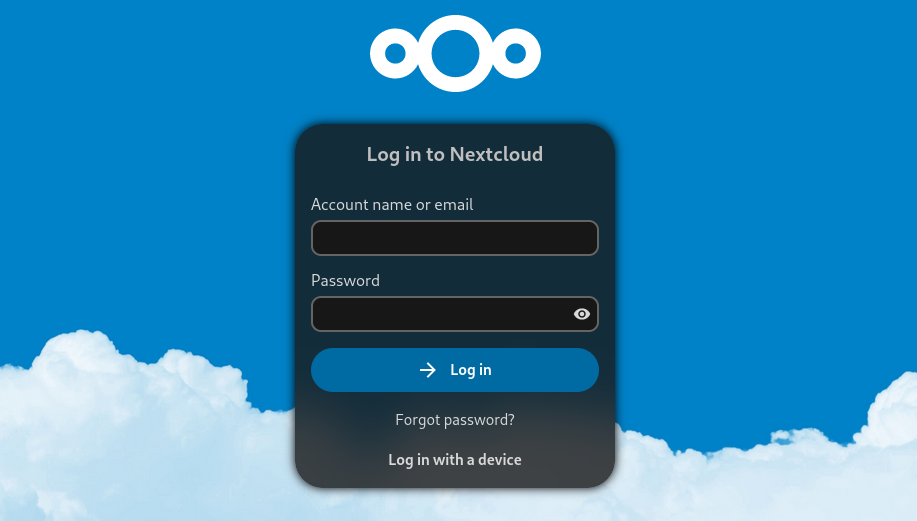 Nextcloud is a popular self-hosted solution for file sync and share as well as cloud apps such as document editing, chat and talk, calendar, photo gallery etc. This guide will walk you through setting up Nextcloud AIO using Docker Compose. This blog post would not be possible without immense help from Sahil Dhiman a.k.a.
Nextcloud is a popular self-hosted solution for file sync and share as well as cloud apps such as document editing, chat and talk, calendar, photo gallery etc. This guide will walk you through setting up Nextcloud AIO using Docker Compose. This blog post would not be possible without immense help from Sahil Dhiman a.k.a. 

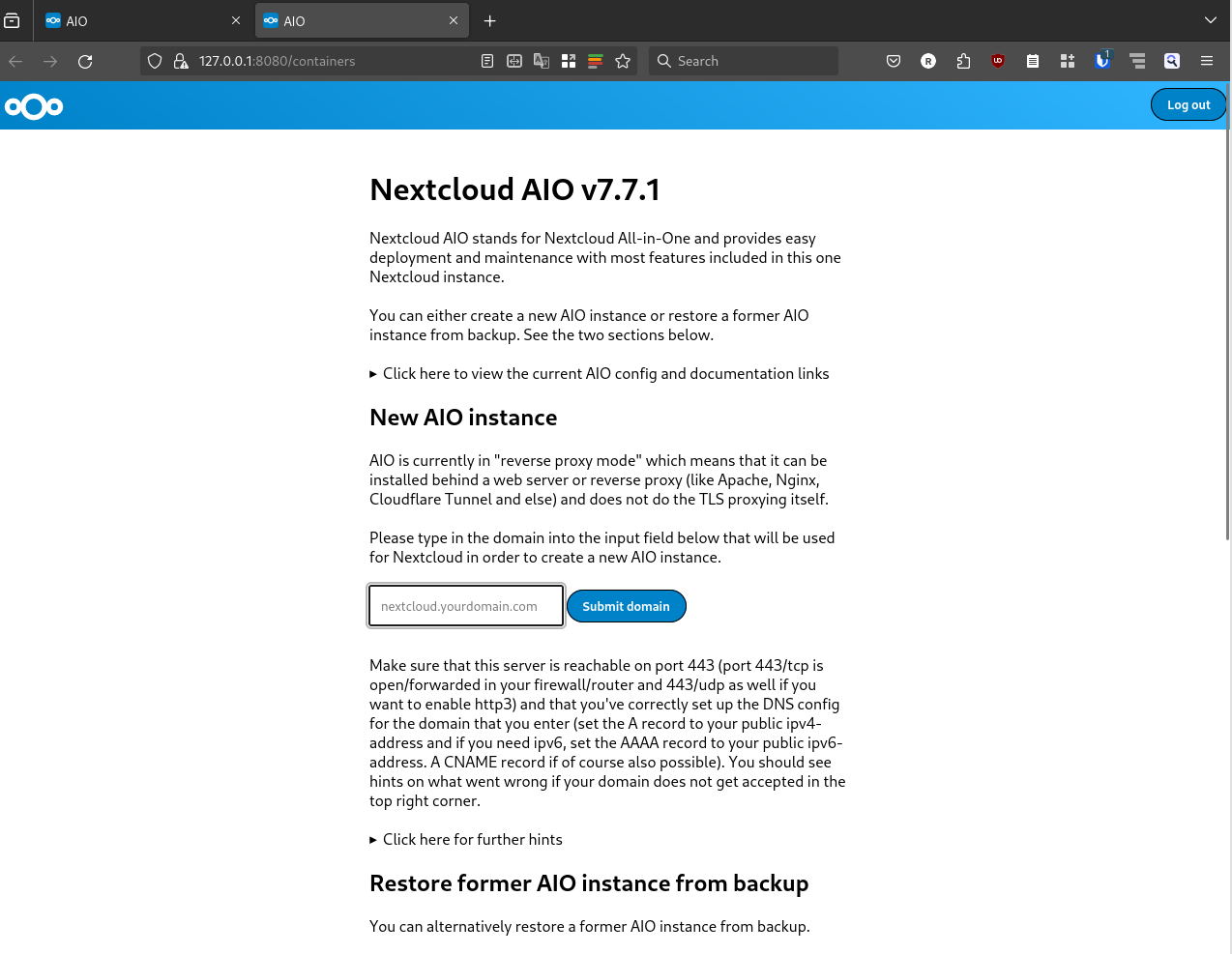



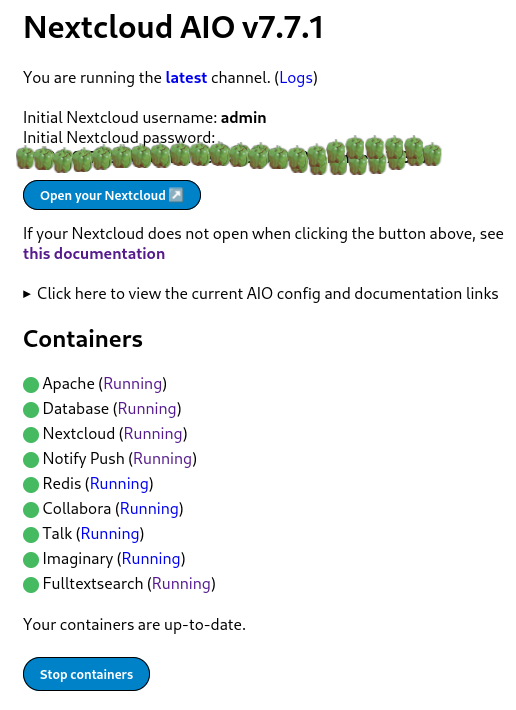


 Hello from a snowy Montr al! My life has been pretty busy lately
Hello from a snowy Montr al! My life has been pretty busy lately





 Some time ago our LUG bought some things from soldered.com and while browsing around the website my SO and I decided to add a junk box to the order and see what we would get.
Other than a few useful things, there were two mostly unpopulated boards for the inkplate 10 which would have been pretty hard to reuse as electronics.
Some time ago our LUG bought some things from soldered.com and while browsing around the website my SO and I decided to add a junk box to the order and see what we would get.
Other than a few useful things, there were two mostly unpopulated boards for the inkplate 10 which would have been pretty hard to reuse as electronics.
 On the other hand, at 23 cm 18 cm they are a size that is reasonable for a book, and the slit near a long edge made them look suitable for the cover plates of a coptic bound book.
Since the size isn t a
On the other hand, at 23 cm 18 cm they are a size that is reasonable for a book, and the slit near a long edge made them look suitable for the cover plates of a coptic bound book.
Since the size isn t a  And then I only had to sew the book, which was done mostly while watching the
And then I only had to sew the book, which was done mostly while watching the  And a couple of days later, trim and sand the pages, which as usual I could have done better, but, well, it works.
The next time I do something like this I think I will have to add a couple more mm also to the height, to be able to trim also those edges.
And a couple of days later, trim and sand the pages, which as usual I could have done better, but, well, it works.
The next time I do something like this I think I will have to add a couple more mm also to the height, to be able to trim also those edges.
 And now of course the Big Question is: what should I dedicate this notebook to? Will I actually use it? This year? This decade?
And now of course the Big Question is: what should I dedicate this notebook to? Will I actually use it? This year? This decade?
 Some time ago, I decided to make a small banner with the
Some time ago, I decided to make a small banner with the  So, with the encouragement of a few friends who were in the secret, this happened. In two copies, because the first attempt at the print had issues.
And yesterday we finally met that friend again, gave him all of the banners, and no violence happened, but he liked them :D
So, with the encouragement of a few friends who were in the secret, this happened. In two copies, because the first attempt at the print had issues.
And yesterday we finally met that friend again, gave him all of the banners, and no violence happened, but he liked them :D



 A long time ago, around the turn of the century, I was looking at some Useful Origami website and found a pattern for a document folder with a lot of pockets.
A long time ago, around the turn of the century, I was looking at some Useful Origami website and found a pattern for a document folder with a lot of pockets.
 And by a lot of pockets I really mean a lot! I immediately had to fold one, and then another one, and then a few others, both in a size suitable for business cards and as a folder for A4 sheets of paper.
And by a lot of pockets I really mean a lot! I immediately had to fold one, and then another one, and then a few others, both in a size suitable for business cards and as a folder for A4 sheets of paper.
 And then, a few years ago I needed a new document folder, and looked for these instructions, and couldn t find them anywhere. Luckily I still had some of the folders I had made, and the model was simple enough that I could unfold those and reconstruct the instructions.
I tried to show them around to see if anybody knew where it came from, but had no results.
And then, a few years ago I needed a new document folder, and looked for these instructions, and couldn t find them anywhere. Luckily I still had some of the folders I had made, and the model was simple enough that I could unfold those and reconstruct the instructions.
I tried to show them around to see if anybody knew where it came from, but had no results.
 Since some time I ve been thinking about making myself a top or a dress with a wide gathered neckline that can be work at different widths, including off-the-shoulders.
A few years ago I ve been gifted a cut of nice, thin white fabric with a print of lines and lozenges that isn t uniform along the fabric, but looks like it was designed for some specific garment, and it was waiting in my stash for a suitable pattern.
And a few days ago, during a Sunday lunch, there was an off-hand mention of a dress from the late 1970s which had an elastic in the neckline, so that it could be optionally worn off-the-shoulders.
And something snapped in place.
I had plans for that afternoon, but they were scrapped, and I started to draw, measure, cut rectangles of fabric, pin and measure again, cut more fabric.
Since some time I ve been thinking about making myself a top or a dress with a wide gathered neckline that can be work at different widths, including off-the-shoulders.
A few years ago I ve been gifted a cut of nice, thin white fabric with a print of lines and lozenges that isn t uniform along the fabric, but looks like it was designed for some specific garment, and it was waiting in my stash for a suitable pattern.
And a few days ago, during a Sunday lunch, there was an off-hand mention of a dress from the late 1970s which had an elastic in the neckline, so that it could be optionally worn off-the-shoulders.
And something snapped in place.
I had plans for that afternoon, but they were scrapped, and I started to draw, measure, cut rectangles of fabric, pin and measure again, cut more fabric.

 The part of the fabric with large vertical stripes had two different widths: I could have made the back narrower, but I decided to just keep a strip with narrower lines to one side.
The fabric also didn t have a full second strip of lozenges, so I had to hem it halfway through it.
The part of the fabric with large vertical stripes had two different widths: I could have made the back narrower, but I decided to just keep a strip with narrower lines to one side.
The fabric also didn t have a full second strip of lozenges, so I had to hem it halfway through it.
 The casing for the elastic was pieced from various scraps, but at least I was able to match the lines on the center front and back, even if they are different. Not that it matters a lot, since it s all hidden in the gathering, but I would have known.
And since I was working on something definitely modern, even if made out of squares and rectangles, of course I decided to hand-sew everything, mostly to be able to use quite small sewing allowances, since the fabric was pretty thin.
In my stash I had a piece of swimsuit elastic that feels nice, looks nice and makes a knot that doesn t slip, so I used it. It s a perfect match, except for the neon yellow colour, which I do like, but maybe is a bit too high visibility? I will see if the haberdasher has the same elastic in dark blue, but right now this will do.
It was a quick project anyway: by the end of the working week the top was finished; I think that on a sewing machine it would be easy to make it in a day.
The casing for the elastic was pieced from various scraps, but at least I was able to match the lines on the center front and back, even if they are different. Not that it matters a lot, since it s all hidden in the gathering, but I would have known.
And since I was working on something definitely modern, even if made out of squares and rectangles, of course I decided to hand-sew everything, mostly to be able to use quite small sewing allowances, since the fabric was pretty thin.
In my stash I had a piece of swimsuit elastic that feels nice, looks nice and makes a knot that doesn t slip, so I used it. It s a perfect match, except for the neon yellow colour, which I do like, but maybe is a bit too high visibility? I will see if the haberdasher has the same elastic in dark blue, but right now this will do.
It was a quick project anyway: by the end of the working week the top was finished; I think that on a sewing machine it would be easy to make it in a day.
 And it can be worn off the shoulders! Which is something I will probably never do in public (and definitely not outdoors), but now if I wanted I could! :D
As usual, the pattern (for what pattern there is) and instructions are
And it can be worn off the shoulders! Which is something I will probably never do in public (and definitely not outdoors), but now if I wanted I could! :D
As usual, the pattern (for what pattern there is) and instructions are 
 But part of it has been neglect as well as this time
But part of it has been neglect as well as this time 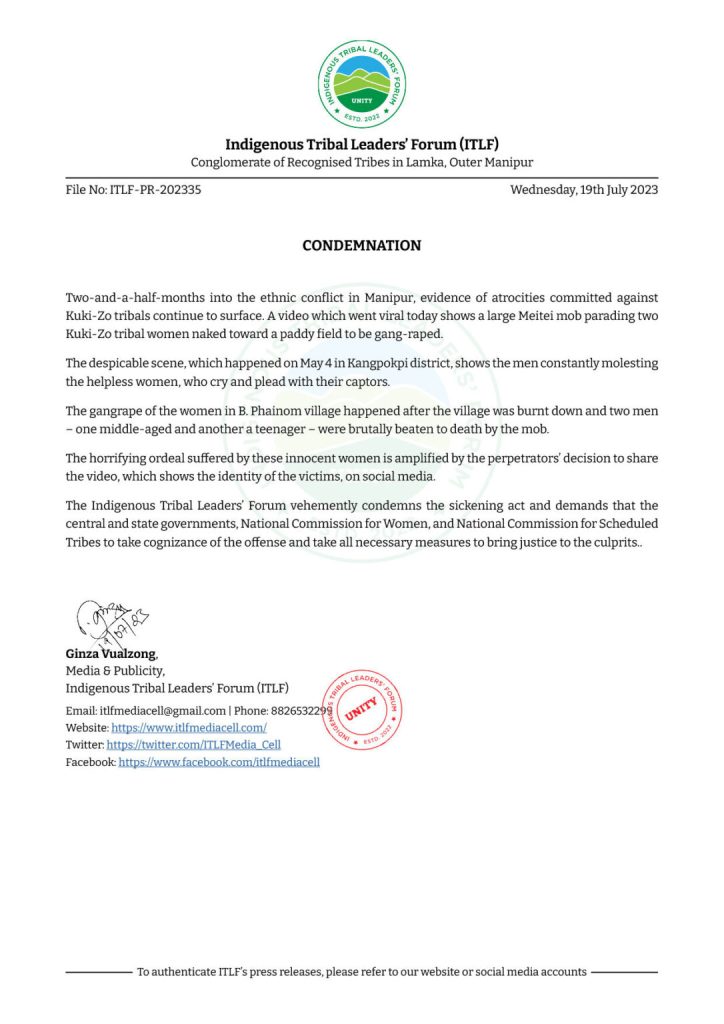
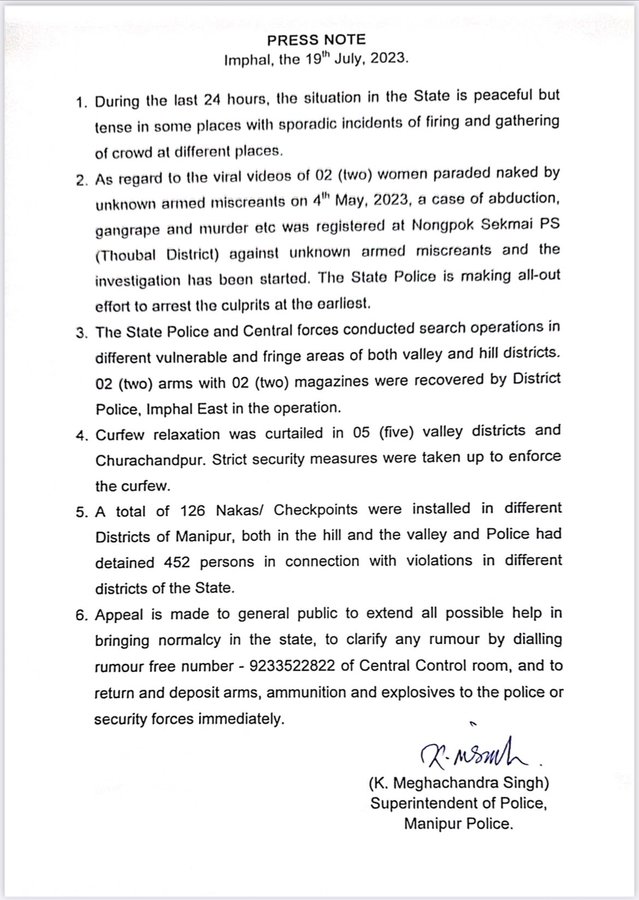


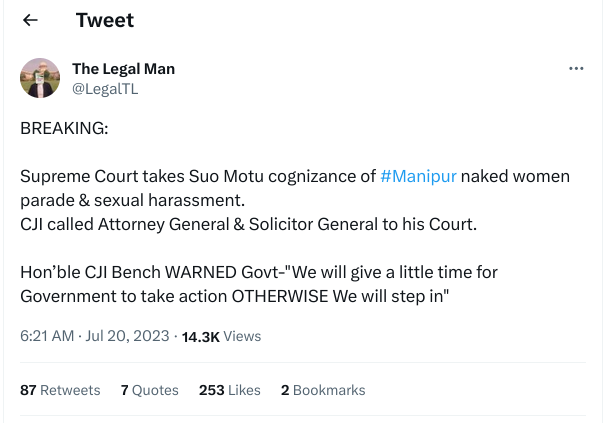



 Some time ago, on an early Friday afternoon our internet connection died. After a reasonable time had passed we called the customer service, they told us that they would look into it and then call us back.
On Friday evening we had not heard from them, and I was starting to get worried. At the time in the evening when I would have been relaxing online I grabbed the first Victorian sewing-related book I found on my hard disk and started to read it.
For the record, it wasn t actually Victorian, it was
Some time ago, on an early Friday afternoon our internet connection died. After a reasonable time had passed we called the customer service, they told us that they would look into it and then call us back.
On Friday evening we had not heard from them, and I was starting to get worried. At the time in the evening when I would have been relaxing online I grabbed the first Victorian sewing-related book I found on my hard disk and started to read it.
For the record, it wasn t actually Victorian, it was  Anyway, this book had a system to draft a pair of combinations (chemise top + drawers); and months ago I had already tried to draft a pair from another system, but they didn t really fit and they were dropped low on the priority list, so on a whim I decided to try and draft them again with this new-to-me system.
Around 23:00 in the night the pattern was ready, and I realized that my SO had gone to sleep without waiting for me, as I looked too busy to be interrupted.
The next few days were quite stressful (we didn t get our internet back until Wednesday) and while I couldn t work at my day job I didn t sew as much as I could have done, but by the end of the week I had an almost complete mockup from an old sheet, and could see that it wasn t great, but it was a good start.
One reason why the mockup took a whole week is that of course I started to sew by machine, but then I wanted flat-felled seams, and felling them by hand is so much neater, isn t it?
And let me just say, I m grateful for the fact that I don t depend on streaming services for media, but I have a healthy mix of DVDs and stuff I had already temporary downloaded to watch later, because handsewing and being stressed out without watching something is not really great.
Anyway, the mockup was a bit short on the crotch, but by the time I could try it on and be sure I was invested enough in it that I decided to work around the issue by inserting a strip of lace around the waist.
And then I went back to the pattern to fix it properly, and found out that I had drafted the back of the drawers completely wrong, making a seam shorter rather than longer as it should have been. ooops.
I fixed the pattern, and then decided that YOLO and cut the new version directly on some lightweight linen fabric I had originally planned to use in this project.
The result is still not perfect, but good enough, and I finished it with a very restrained amount of lace at the neckline and hems, wore it one day when the weather was warm (loved the linen on the skin) and it s ready to be worn again when the weather will be back to being warm (hopefully not too soon).
The last problem was taking pictures of this underwear in a way that preserves the decency (and it even had to be outdoors, for the light!).
This was solved by wearing leggings and a matched long sleeved shirt under the combinations, and then promptly forgetting everything about decency and, well, you can see what happened.
Anyway, this book had a system to draft a pair of combinations (chemise top + drawers); and months ago I had already tried to draft a pair from another system, but they didn t really fit and they were dropped low on the priority list, so on a whim I decided to try and draft them again with this new-to-me system.
Around 23:00 in the night the pattern was ready, and I realized that my SO had gone to sleep without waiting for me, as I looked too busy to be interrupted.
The next few days were quite stressful (we didn t get our internet back until Wednesday) and while I couldn t work at my day job I didn t sew as much as I could have done, but by the end of the week I had an almost complete mockup from an old sheet, and could see that it wasn t great, but it was a good start.
One reason why the mockup took a whole week is that of course I started to sew by machine, but then I wanted flat-felled seams, and felling them by hand is so much neater, isn t it?
And let me just say, I m grateful for the fact that I don t depend on streaming services for media, but I have a healthy mix of DVDs and stuff I had already temporary downloaded to watch later, because handsewing and being stressed out without watching something is not really great.
Anyway, the mockup was a bit short on the crotch, but by the time I could try it on and be sure I was invested enough in it that I decided to work around the issue by inserting a strip of lace around the waist.
And then I went back to the pattern to fix it properly, and found out that I had drafted the back of the drawers completely wrong, making a seam shorter rather than longer as it should have been. ooops.
I fixed the pattern, and then decided that YOLO and cut the new version directly on some lightweight linen fabric I had originally planned to use in this project.
The result is still not perfect, but good enough, and I finished it with a very restrained amount of lace at the neckline and hems, wore it one day when the weather was warm (loved the linen on the skin) and it s ready to be worn again when the weather will be back to being warm (hopefully not too soon).
The last problem was taking pictures of this underwear in a way that preserves the decency (and it even had to be outdoors, for the light!).
This was solved by wearing leggings and a matched long sleeved shirt under the combinations, and then promptly forgetting everything about decency and, well, you can see what happened.
 The pattern is, as usual, published on my
The pattern is, as usual, published on my  I suspect that the linen one will get worn a lot this summer (linen on the skin. nothing else need to be said), while the cotton one will be stored away for winter. And then maybe I may make a couple more, if I find out that I m using it enough.
I suspect that the linen one will get worn a lot this summer (linen on the skin. nothing else need to be said), while the cotton one will be stored away for winter. And then maybe I may make a couple more, if I find out that I m using it enough.